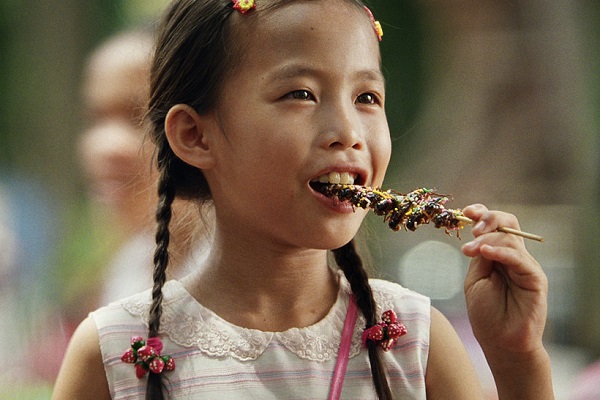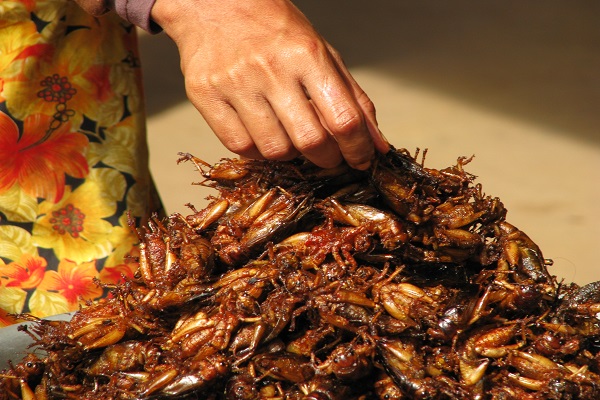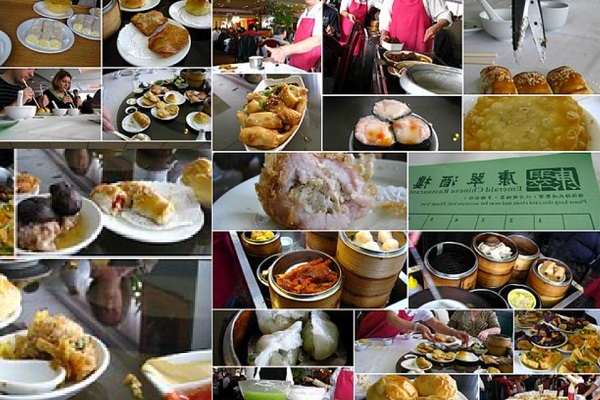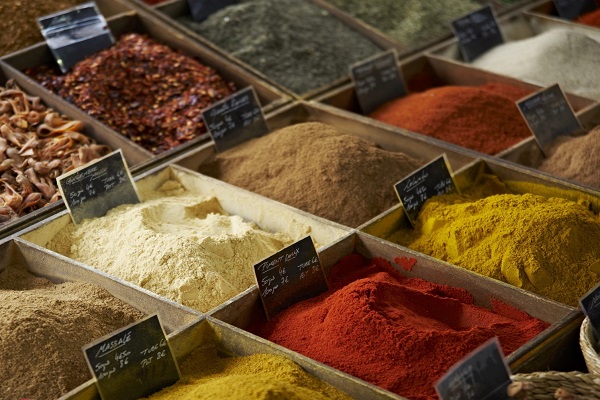
So, eating insects is healthy and good for the planet, but getting people to eat them has proved impossible. The UN has been trying to get more people to eat insects for nearly two decades now but since they started, the estimated number of people around the world that eat bugs hasn’t gone above 2 billion. According to the UN, there are over 1,900 species of edible insects rich in protein, iron, calcium and other important nutrients that the human population could really use more of. However, killing beetles and caterpillars with pesticides sounds easier than capturing them for food and that is what the majority of us still do. There are countries that have embraced the consumption of insects for years though, and in these 10 countries, munching on a handful of crispy bugs isn’t so strange.
Mexico
When the grasshoppers are in season in Oaxaca, streets are filled with Chapulines as they are locally known. Insects and even their larvae have been eaten in Mexico for over 500 years since the Aztecs. The list of edible insects in the country is quite long although Chapulines are the most common of them all and they have received acceptance all over the world. Other insects eaten in Mexico include ant larvae, ants, and Maguey worms. The consumption of insects declined in centuries of Spanish occupation of the country but it has since picked up the pace and more people are accepting insects as a reliable source of proteins.
Ghana
Termites, beetles, beetle larvae and weevil larvae are some of the insects that have been eaten across Africa for ages. However, the culture of eating insects declined with colonization and urbanization leaving only a few communities in the rural areas to keep up the practice. However, food shortage on the continent is a big problem and most families have to go without food or stick with starch-based nutrition only which is no good on its own. Farming edible insects have been offered to farmers in Kumasi and its environs to get both the rural and urban populations in the country to eat more insects alongside their starch-based diet. The program has seen Ghana become one of the leading insect consuming countries in Africa.
China
China has a long history of including insects in the human diet and preparing insects for human consumption is advanced in most Chinese communities compared to other places in the world. Centuries of perfection have seen many Chinese provinces farm and maintain a steady supply of edible insects. Almost every province in China has its favourite traditional insect delicacy with most of these dishes flooding major cities. Finding crunchy bee larvae, cockroaches and other insects in the streets of Beijing is not a strange thing anymore.
Cambodia
Most visitors in Cambodia are astonished at the number of insects and arachnids being sold in the streets including some of the ickiest ones such as tarantulas. The country spent years under an oppressive military regime that saw people’s tables deprived of food forcing people to eat whatever they could and insects became a popular option for most people. Maggots, tarantulas, red ants, cockroaches and crickets are some of the snacks served all over the streets and restaurants in Cambodia as delicacies.
Vietnam
Like China, Vietnam has a reputation for serving some of the craziest foods in the world and insects and worms are a big part of the ickiest foods in the country. The most common insect larvae in Vietnam is fried beetle larvae although some videos of people consuming the white wriggly crawlers raw make headlines from time to time. Silkworm and crickets also make part of many local snacks in the country.

Brazil
Just as Chapulines are widely consumed in Mexico, so are edible ants in Brazil. Caviar or edible ant eggs are also a common snack in the country. However, as more pesticides are used on farms and in the forests, most of these insects are being wiped out so their supply has diminished considerably. However, being the most populous country in Latin America, the country doesn’t seem to be running short of its edible insect supply just yet. However, being the most populous country in Latin America, the country doesn’t seem to be running short of its edible insect supply just yet. Many farmers have resorted to farming edible insects to bridge the diminishing supply from the wild. However, for that farmers need a building, preferably one that is built from steel (which, by the way, can be constructed with the help of steel building contractors), where the process of insect farming could take place smoothly.
Anyway, new edible insects from other countries have also been accepted in Brazil making it the largest insect consumer in Latin America.
Cameroon
Cameroon is one of those countries that give a perfect image of what life in Sud-Saharan Africa looks like since the country extends from the Congo Basin in the south to the Sahel in the North. If an insect is consumed in any part of Africa, chances are it is also consumed in Cameroon. The most common insect food in Cameroon are caterpillars which are readily available thanks to the rainforests that provide cover and food for the crawlers. Crickets, grasshoppers, termites and insect larvae and also consumed by different communities across the country.
South Africa
South Africa is one of the largest economies in Africa, with a larger urban population than most of the other countries of its size. However, insect-eating is one aspect of the country’s culture that is rarely explored. There are many people in the country who still hold onto this culture though, with crisp fried termites being the most widely consumed insect in the country. Other people also eat caterpillars, worms and insect larvae. Most people eat insects that they saw family and friends eating, so it is hard to say that any insect dish is universally accepted in South Africa.
Thailand
In Thailand, being served a handful of silkworms that have completed their service to humanity is not uncommon. It is one of those countries where eating insects is normal in both urban and rural areas with many exotic edible insects such as crickets, water beetles and worms being widely accepted as well. Both day and night markets are full of insect dishes with many people blending them into their regular daily meals including drinking beer.

Japan
Yes, insects are not as widely consumed in Japan today as they were after WWII, but you still don’t have to search for a long time to find people eating wasp or silkworm pupae. Entomophagy is part of most Japanese culinary traditions although eating insects is not as widely practised in the urban areas anymore. In the mountainous regions of Gifu and Nagano, insects are still widely consumed since most people there stuck to their traditional dishes. Silkworm and wasps as well as their larvae are the most widely consumed insects in Japan although the list is long and it includes aquatic insects and grasshoppers in other places.








